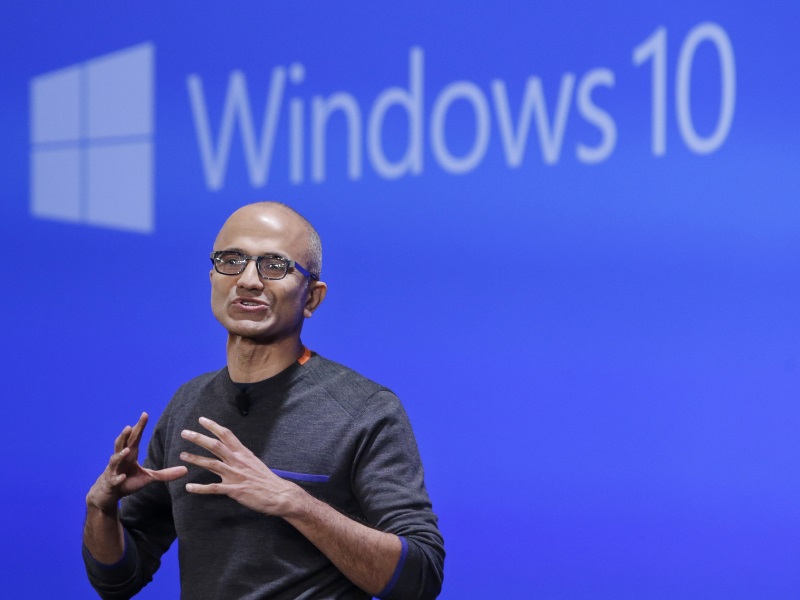If you're running an older version of Windows, you might suddenly find
Microsoft's Windows 10 upgrade already downloaded on your machine.
You never requested it, so why are you getting it?
The
automatic download is part of Microsoft's aggressive push to get
Windows 10 on as many devices as possible. Since last July, Microsoft
has distributed the free upgrade on request. But starting this week,
it's also pushing it out to those who haven't requested it - and who
might not want it.
(Also see: Microsoft Labels Windows 10 as a Recommended Update)
Microsoft isn't actually installing Windows 10 automatically, but installation is
just a click or two away. If you're not careful, you might suddenly
find the new system on your old machine.
Is this good for you?
Why you should install Windows 10
Windows
10 has many improvements over its predecessors - especially Windows 8.
It's much easier to use than Windows 8, and it offers more modern
controls - akin to mobile devices - than Windows 7. (There is no Windows
9.) Windows 10 also paves the way for multiple devices to work
together. You might be able to buy an app once to run on your PC, phone
and Xbox game machine, for instance. The app's layout would
automatically reconfigure to the given screen size.
(Also see: Eight Reasons Why You Should Upgrade to Windows 10)
New apps are being designed for Windows 10, so if you have an older system, you might find yourself shut out.
Why Microsoft wants you to install Windows 10
Microsoft
is reducing reliance on software sales in favour of services such as
the Bing search engine, OneDrive storage and Skype for communications.
Windows 10 was designed to steer users to those services. Microsoft
makes money from ads and premium features that cost money - such as
additional OneDrive storage.
Microsoft can also encourage app
makers to write more software for Windows 10 if a lot of people are
using it. It's similar to how Apple pushes its users to upgrade to the
latest iPhone and Mac systems. App developers know they can enable the
latest features without worrying about abandoning too many users of
older devices.
(Also see: Microsoft Makes It Easier to Upgrade to Windows 10)
Reasons not to install Windows 10
System
upgrades aren't always smooth, especially on older machines with slower
processors, less memory and less storage space available. Microsoft's
Get Windows 10 app will verify that you meet minimum system requirements
- but minimum doesn't mean speedy.
Older machines also might have
software that won't work on Windows 10, so you'd have to spend money
upgrading those programs, if upgrades are available at all. Printers,
scanners and other accessories also might need new controlling software,
called drivers. If a driver update isn't available, you might find
yourself with a dead accessory.
And once you upgrade to Windows
10, you might be ceding control over future upgrades to Microsoft. The
company is offering incremental updates to Windows 10 on a regular
basis, and it won't always give you a choice on whether to accept.
(Also see: Features You'll Lose When Upgrading to Windows 10)
How to stop Windows 10 update
Microsoft
is treating Windows 10 as a type of security update it regularly pushes
to users. Microsoft is now reclassifying Windows 10 as "recommended"
rather than "optional." In doing so, those who have set their machine to
automatically get important updates will get Windows 10, too. You can
avoid this by turning off automatic updates in the settings under
Windows Update. That's not recommended, though, because you might miss
important security fixes.
(Also see: Windows 10 Upgrade Could Install 'Automatically' if You Aren't Careful)
If
you work for a large company, your system administrators are likely
monitoring these updates, so Windows 10 won't automatically download
without their OK. Plus, Microsoft isn't offering Windows 10 for free to
larger companies.
Microsoft will support Windows 7 until 2020 and
Windows 8 until 2023, after which time it will stop fixing any security
problems. By then, it might be time for a new computer anyway.
(Also see: Windows 10 Review: New, Yet Familiar)
If you're ready to install Windows 10
To
install Windows 10, all you need to do is accept it when prompted.
Getting Windows 10 shouldn't affect your photos and other documents,
though there's always a risk of a meltdown with any major upgrade. Back
up your files first. You can use an online storage service such as
OneDrive or DropBox to keep a backup online.
How to roll back from Windows 10
Microsoft
keeps a backup of your system for a month. In the settings, go to
"Update & security" and then "Recovery." You'll find the option to
return to Windows 7 or 8. Your files should be OK, but you'll lose any
apps installed after upgrading to Windows 10. Remember, you have only 31
days to change your mind.
(Also see: How to Downgrade From Windows 10 to Windows 7 or Windows 8.1)
 Microsoft Uses Security Copilot to Identify 20 Flaws in Open-Source Bootloaders2 April 2025
Microsoft Uses Security Copilot to Identify 20 Flaws in Open-Source Bootloaders2 April 2025 Windows 11 Insiders Get Access to Quick Machine Recovery Tool That Tackles CrowdStrike-Like Incidents2 April 2025
Windows 11 Insiders Get Access to Quick Machine Recovery Tool That Tackles CrowdStrike-Like Incidents2 April 2025 Alibaba Preparing for Flagship AI Model Release as Soon as April2 April 2025
Alibaba Preparing for Flagship AI Model Release as Soon as April2 April 2025 Asus Teases Next-Gen ROG Ally Model That Could Arrive as a Portable Xbox Handheld1 April 2025
Asus Teases Next-Gen ROG Ally Model That Could Arrive as a Portable Xbox Handheld1 April 2025 Microsoft Is Expanding Snapdragon-Exclusive AI Features to Intel, AMD-Powered Copilot+ PCs1 April 2025
Microsoft Is Expanding Snapdragon-Exclusive AI Features to Intel, AMD-Powered Copilot+ PCs1 April 2025



![Gadgets 360 With Technical Guruji: News of the Week [March 29, 2025]](https://c.ndtvimg.com/2025-03/9cu1890s_news-of-the-week_160x120_29_March_25.jpg?downsize=180:*)










